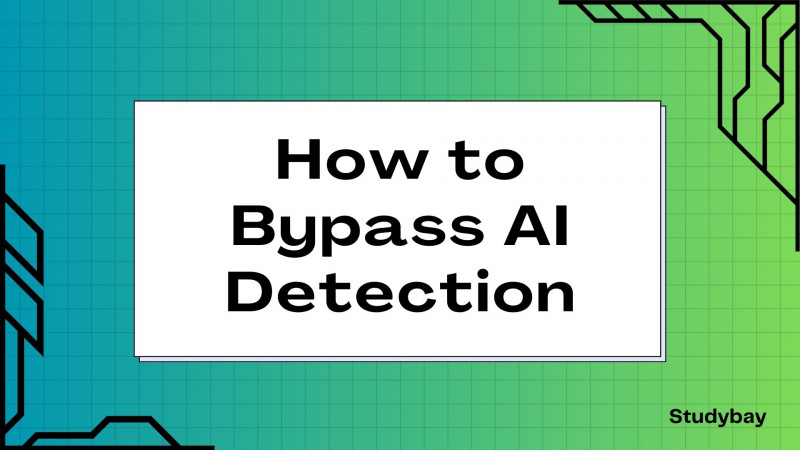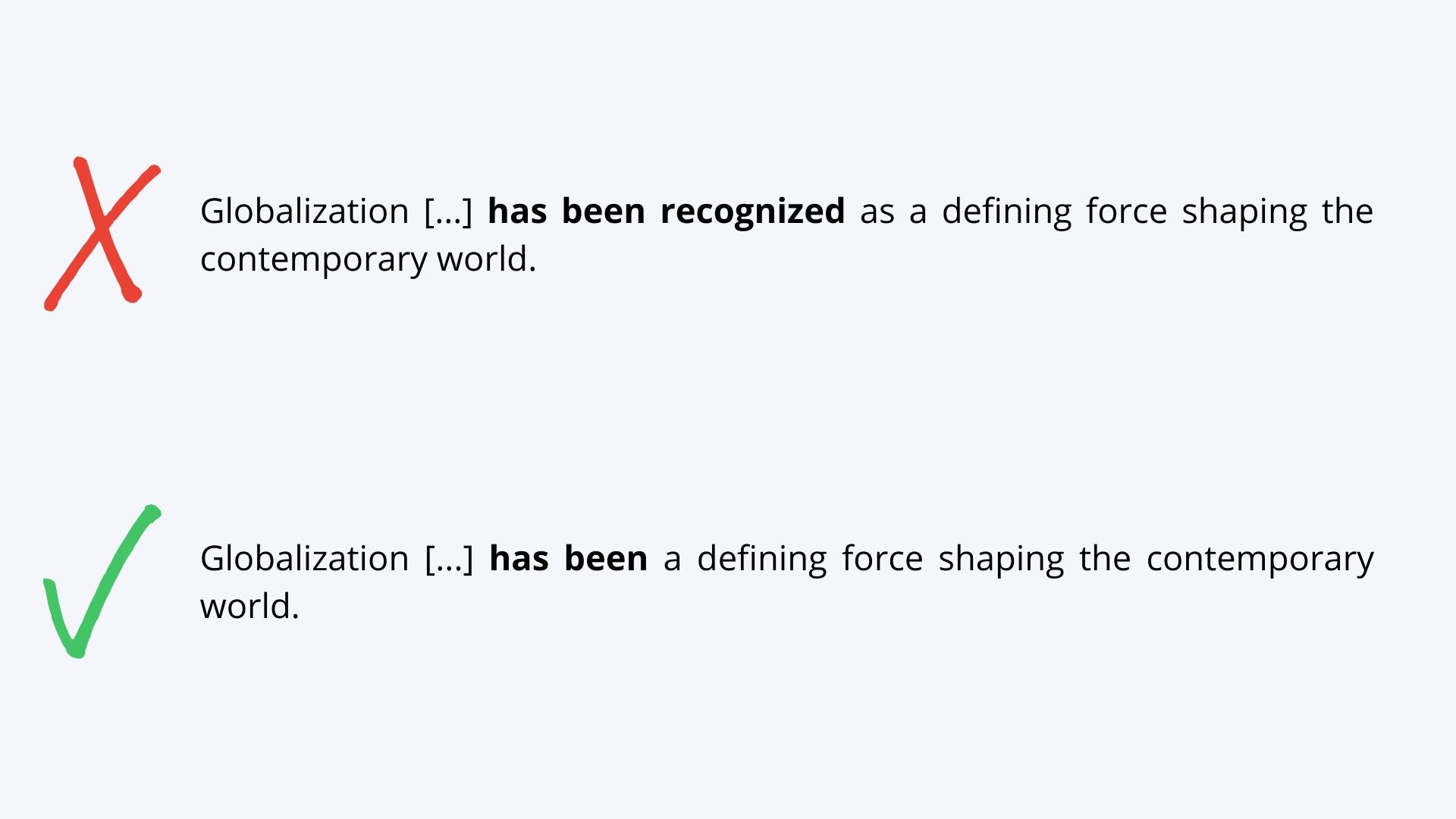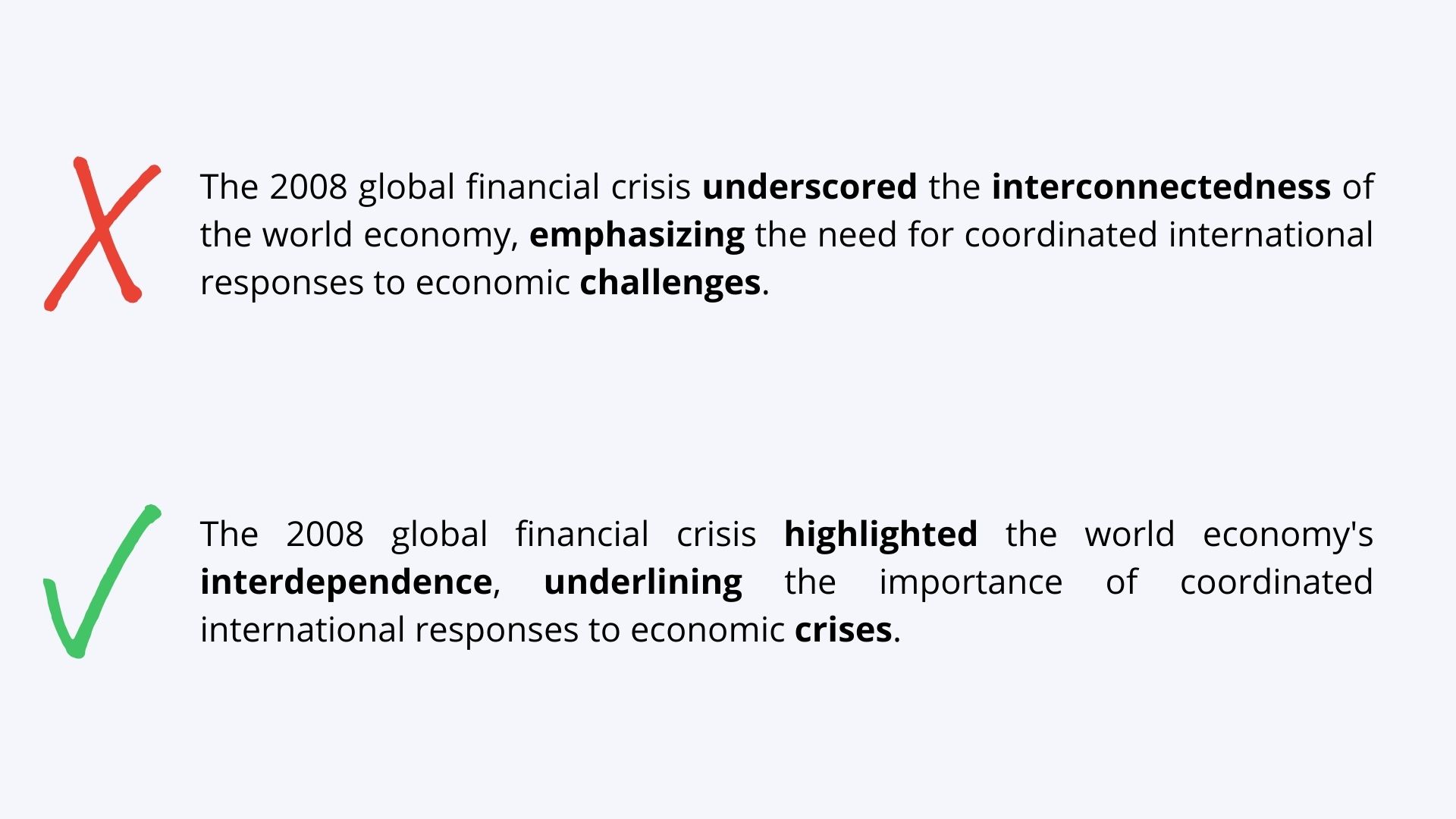
14 min
0
12.22.2023

As technology enhances, the use of AI has exploded, especially for content creation. It also contributes to making life easier for many people in numerous sectors across the world. Additionally, using AI can be a time and money-saver for businesses, users, and students. However, caution should be applied when using AI to make sure the exciting technology is being used appropriately and in the right contexts.
For example, in the education sector, schools expect original pieces to reflect the knowledge learned. Students seeking help with writing their papers may turn to AI for assistance and will, therefore, need to bypass AI text detection tools. In this exploration, we'll look at the balance between using AI's creativity and dealing with the challenges that come up when trying to outsmart the systems meant to improve our digital experiences.
Why Is It Necessary to Bypass AI Detection?
Some schools deem using AI content one of the most extreme offenses when submitting work, second only to plagiarism. This is because AI pulls data from an enormous pool of resources. It can compromise integrity and increase the chances of repeating information from another source. This in itself is plagiarism. So, it is vital to be vigilant if you want to bypass AI detector tools.
AI can also impact visibility on search engines. For example, if you deal with ad traffic on platforms such as Google, you must ensure your content is not flagged as ‘automatically generated.’ As a trusted search engine, they must make sure the suggested content is written for people, not for search results.
If AI usage is flagged and uncovered, it can result in severe consequences. This includes failing classes but can extend to suspension and possible expulsion or loss of a job.
How Does an AI Detection Tool Work?
AI detection tools compare submitted works to databases across the internet, similar to how AI is trained. They match aspects of the text to see whether it feels natural or forced. They will also look for uniformity, complexity, and other variables, to determine whether text goes in the ‘human content’ bucket or the ‘AI content’ bucket. Additionally, they analyze syntax and use a range of mathematical predictions. This comes from a range of natural language processing techniques, alongside machine learning algorithms.
To get around AI detectors, it is critical to understand how they work before using tools and techniques to avoid text being flagged. This knowledge arms users with the insight needed to produce AI-generated content that seamlessly integrates into the digital landscape.
How to Get Past AI Detectors
There are a few ways to get around an AI detector, and they are fairly simple to implement. From inserting personal experience to changing up syntax, there are many options to make the text feel authentic without compromising on any use of AI. As previously mentioned, AI does have its purposes. But, if Google were to let AI content run rampant, for example, there would be little to no fact-checking, leaving an abundance of false information available to consumers.
Use Active Voice
Using the passive voice is a key indicator of AI texts. Active voice is where the subject of the sentence is doing something. Passive voice is where the subject of the sentence is having something done to it. For example, ‘The dog ate the biscuit.’ (active) versus ‘The biscuit was eaten by the dog.’ (passive). Humans tend to speak using the active voice, which makes AI stand out.
While it doesn’t immediately pin a text as AI-generated, it can be a flag. If you are looking to bypass AI content detection, avoid the use of the passive voice unless you are writing an intense scholarly article where the passive voice is more suitable.

Reword and Change Syntax
AI texts can often feel clunky and inhuman. This makes sense, as a person has not written them. Rewording and changing up syntax is a good way to make sure your content is not flagged. Choosing to rewrite to bypass AI detection by yourself or using special paraphrasing tools is one of the better options for making sure these texts go unnoticed. It will also inject emotion, persuasion, and opinion into the paper. This makes it sound more personal and presents a better understanding of the topic at hand.
Switching syntax can lead to a more interesting read for your audience. It mixes up the expected structure and will keep readers engaged.

Use Unicode Characters
Using a Unicode letter or symbol – that looks like English but is not – can sneak by some detectors. However, with the way AI detectors are already heading, this is becoming obsolete. The majority of AI detection bypass tools nowadays are extremely intelligent and can pick up on this technique.
Simplify the Writing
Often, AI-generated content uses overcomplicated and long sentences. This means the structure feels off, and it is difficult to follow. This means the structure feels off, and it is difficult to follow. In addition to this, words will have different meanings depending on context, which AI cannot determine.
Simplifying can be an effective AI detection bypass option. AI tends to mold text rather than create something from scratch, pushing building blocks together to resemble writing. Simplification can be a way to get past this. In addition to this, the text will be accessible to more readers.

Use Appropriate Synonyms
AI comes across as generic and bland – almost human, but not quite. By using synonyms and other words that fit the style of writing and the topic at hand, the text will feel more human. Many AI tools will pull from the same databases, meaning wording can be repeated, and keywords will be duplicated. AI may also fail to include keywords or phrases that are not relevant to the task. Adding punchy synonyms will only enhance the impact of the paper and show a better understanding of the topic.

Don’t Leave Out Personal Experience
AI doesn’t have personal experiences as it is not human. By including personal accounts and experiences, thoughts, and opinions, it very quickly becomes a human-generated text, which will pass AI detection. Thinning out any generated text will make it much less likely to be picked up by detection software, as AI cannot replicate a true personal experience. This is because AI software is not capable of reasoning or judgment, meaning no persuasive opinion or reflection can be given.

Make Use of a Humanizer Tool
Humanizer tools are AI bypass tools that make the work sound more human. They filter through the AI-generated patterns and add things here and there to enhance the humanness of the text. This includes jokes, anecdotes, and more. However, be aware that AI will likely never be completely undetectable, but humanizer AI tools can remove the content that may flag up in detectors.
Do It Yourself
The best way to ensure you beat AI detectors is by writing the piece by yourself to remove AI from the picture. Only you can sound like you. If it is too stressful or time-consuming, it doesn’t hurt to look to hire a professional to help write you with this. Look no further than Studybay to start your search for an expert writer! If you need additional support, it is best to speak with your teacher or professor for assistance.
Upgrades to AI Detection Tools
Despite the technology that has developed, it is sometimes the professors reviewing the work who spot an AI text from afar. Humans recognize humans, and we can tell when something isn’t quite right. Those who work with a lot of content know when a text is AI-generated just by reading it, without the need for extra programs.
With enhanced algorithms, the software fighting back against AI detector bypass tools is constantly updating as the need for it grows. For example, as previously mentioned, the Unicode character idea is becoming outdated. Matching each AI content generator as it evolves is essential. There are many tools used by institutions to check for AI text. Schools may not disclose which detection method they use, or they may use more than one, to ensure the document submitted truly reflects the work of the student.
It is a constant back and forth, with each tool battling for the best evolution. The future will show which is most intelligent, but it likely will be a continuous balancing act.
Improved Quality of AI-Generated Content
In today’s technological world, it is no wonder that AI generators are constantly learning to write better. It makes sense that if you want to use a generator to get around AI detection, using the best generator is the best way forward.
Besides some of the more familiar and popular tools like ChatGPT, there are many others out there that can do the same, if not better. For example, StylusAI. This software is specifically trained to generate A+ academic papers and will likely get around AI detection tools.
As we head into a new age of AI-generated content, it’s likely the rules will shift as AI is integrated further into our lives. While the detection tools are constantly being upgraded, so too is AI, with options in their multitudes ready to generate whatever the user needs.
Conclusion
There are numerous methods for bypassing AI detection tools. Even though AI is learning and bettering itself at a rapid pace, the software used to detect it is also improving constantly. It is clear that the most sensible way to avoid text being flagged by a detector is to write the piece yourself or hire another human being to assist. AI does have its uses in the education sector. However, at the moment, it cannot compete with original human text.
While AI has made significant strides in various applications, it still lacks the nuanced creativity, context comprehension, and moral judgment that humans possess. Original human content not only maintains authenticity but also upholds the ethical standards essential for responsible communication in an increasingly digital world.
References
- Rosenzweig-Ziff, D. (2023). New York City schools ban CHATGPT. The Washington Post. https://www.washingtonpost.com/education/2023/01/05/nyc-schools-ban-chatgpt/
- Ghaffary, S. (2023). Universities rethink using AI writing detectors to vet students’ work. Bloomberg.com. https://www.bloomberg.com/news/newsletters/2023-09-21/universities-rethink-using-ai-writing-detectors-to-vet-students-work
- Artificial Intelligence at Northwestern University. Use of Generative Artificial Intelligence in Courses: Artificial Intelligence at Northwestern University. (2022). https://ai.northwestern.edu/education/use-of-generative-artificial-intelligence-in-courses.html
- Klee, M. (2023). She was falsely accused of cheating with ai - and she won’t be the last. Rolling Stone. https://www.rollingstone.com/culture/culture-features/student-accused-ai-cheating-turnitin-1234747351/
- Beaty, A. (2023). OpenAI pulls its own AI detection tool because it was performing so poorly. ZDNET. https://www.zdnet.com/article/openai-pulls-its-own-ai-detection-tool-because-it-was-performing-so-poorly/
FAQ
Where can I learn how to get around AI detectors?
Is it possible to get an AI detection tool bypass?
What is the definition of a bypass AI detection tool?
Do special AI detection bypass tools exist?



